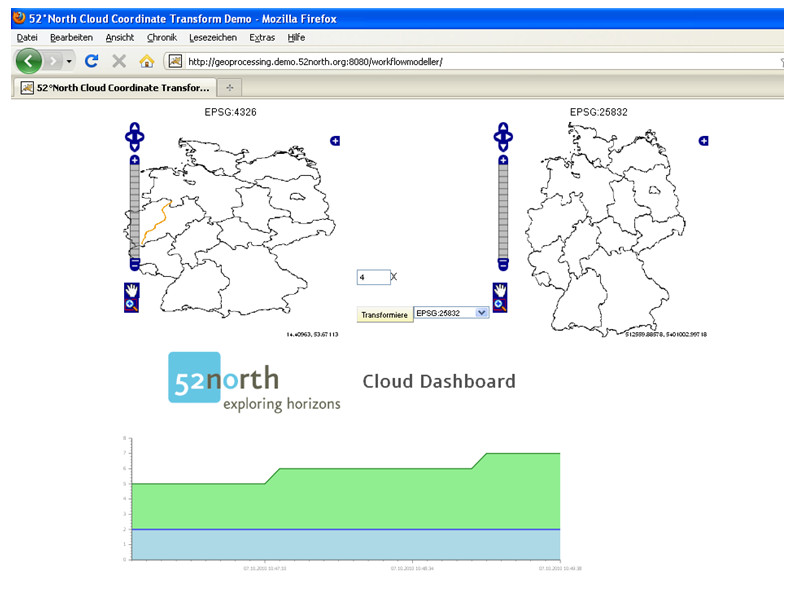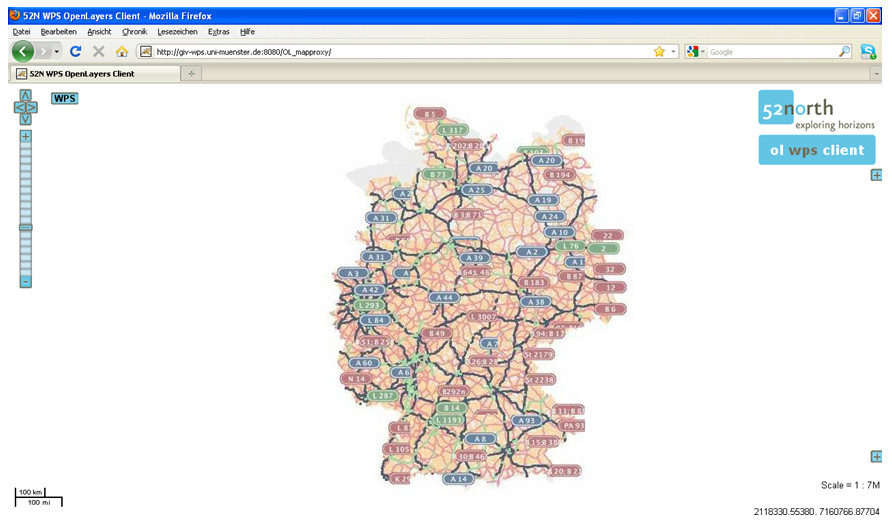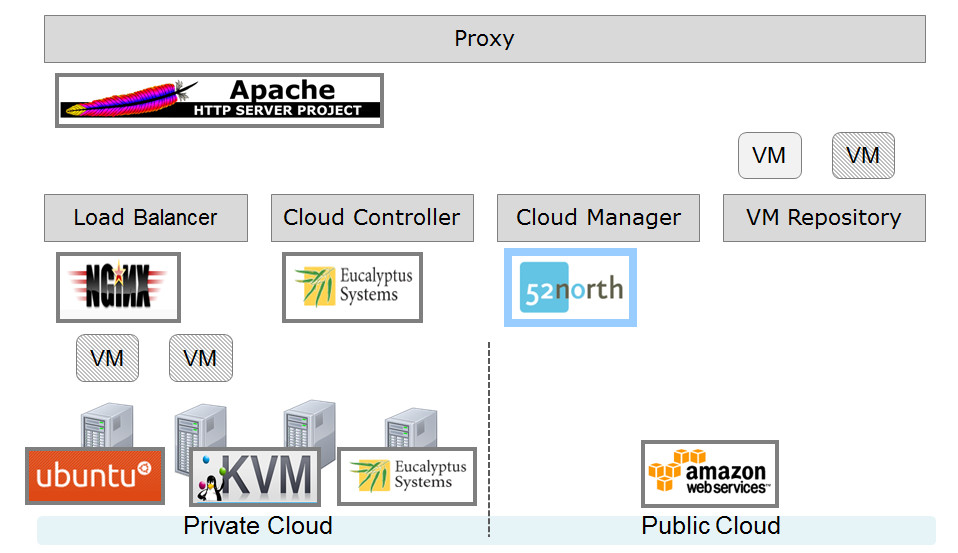You are here: Wiki>Geoprocessing Web>CloudComputing (28 Jan 2014, EikeJuerrens)Edit Attach
Cloud Computing
By Bastian Schäffer, 2008 Cloud Computing is an emerging trend in the mainstream IT world. 52°North has worked extensively in this field in order to combine classical Geospatial Web Services with this new Paradigm. Scalability was a prime goal here for mastering massive requests and peak loads. The following figure shows the response time on a local machine:
Web Geoprocessing Service (WPS) in the Cloud
The 52°North WPS was successfully installed out-of-the box on the following public cloud environments:- Amazon Web Services (AMI available on request, see this {{{https://52north.org/download/Geoprocessing/documents/aws_cloud_set_up_guide_v1.0.pdf}tutorial}})
- Google App Engine
- Eucalyptus
 The response time could be held nearly constant even during peakloads as shown in the figure below.
The response time could be held nearly constant even during peakloads as shown in the figure below.

Web Map Service in the Cloud
Web Map Services (WMS) often have to deal with a large number of requests. In order to handle peak loads, a solution was created which utilizes a WMS (Geoserver) in a cloud environment (public cloud: Amazon, private cloud: Eucalyptus). The following figure shows OSM streetdata for Germany served by a WMS in the cloud. The rendering of tiles could be massively improved and the response time even during peak load held constant.
Hybrid Cloud
As a third opton, we provide solutions for a hybrid cloud by “cloudifying” local IT resources to private clouds and using public clouds (such as Amazon Web Services) for peak loads. A reference architecture entirely composed of open-source components was created as depicted in the figure below. Our own Cloud Management software for monitoring and ruleset defining is available as open-source in our repository.
A constant response time was reached even during peak loads.
Our own Cloud Management software for monitoring and ruleset defining is available as open-source in our repository.
A constant response time was reached even during peak loads.
 For more information, please contact: Bastian Schäffer b.schaeffer @ 52north.org
For more information, please contact: Bastian Schäffer b.schaeffer @ 52north.org
Metadata
- Topic created by: DanielNuest
- Topic created on: 2013-03-20
| I | Attachment | Action | Size | Date | Who | Comment |
|---|---|---|---|---|---|---|
| |
coordinate_transformation.jpg | manage | 76 K | 20 Mar 2013 - 21:39 | UnknownUser | |
| |
hybrid.jpg | manage | 97 K | 20 Mar 2013 - 21:39 | UnknownUser | |
| |
hybrid_architecture.jpg | manage | 93 K | 20 Mar 2013 - 21:39 | UnknownUser | |
| |
local.jpg | manage | 89 K | 20 Mar 2013 - 21:39 | UnknownUser | |
| |
public.jpg | manage | 92 K | 20 Mar 2013 - 21:39 | UnknownUser | |
| |
wms.jpg | manage | 100 K | 20 Mar 2013 - 21:39 | UnknownUser |
Edit | Attach | Print version | History: r3 < r2 < r1 | Backlinks | View wiki text | Edit wiki text | More topic actions
Topic revision: r2 - 28 Jan 2014, EikeJuerrens
Legal Notice | Privacy Statement
 Copyright © by the contributing authors. All material on this collaboration platform is the property of the contributing authors.
Copyright © by the contributing authors. All material on this collaboration platform is the property of the contributing authors.
Ideas, requests, problems regarding Wiki? Send feedback
 Copyright © by the contributing authors. All material on this collaboration platform is the property of the contributing authors.
Copyright © by the contributing authors. All material on this collaboration platform is the property of the contributing authors. Ideas, requests, problems regarding Wiki? Send feedback


